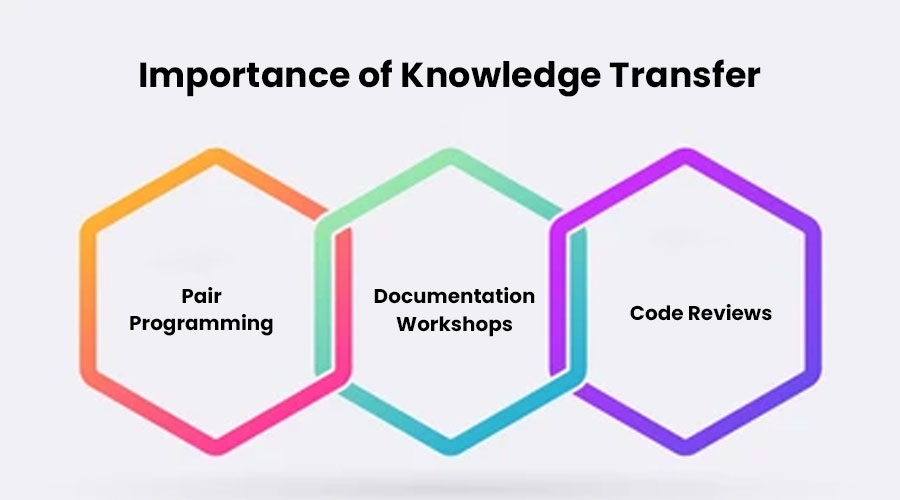Table of Contents
Introduction to Agile Code Refactoring
In the fast-paced world of software development, staying agile is key to success. One of the most powerful tools in the developer’s arsenal is code refactoring. Agile code refactoring is not just about improving code quality; it’s a mindset, a practice that fosters continuous improvement and adaptability. In this article, we’ll delve into the fundamentals of agile code refactoring, exploring its benefits, best practices, and how it fits within the broader agile methodology.
Understanding Agile Code Refactoring
At its core, code refactoring is the process of restructuring existing code without changing its external behavior. This means cleaning up the code, improving its readability, and making it more maintainable without altering what it does. Agile code refactoring takes this concept a step further by integrating it seamlessly into the iterative and incremental development approach of agile methodologies.
Benefits of Agile Code Refactoring
The benefits of agile code refactoring are manifold. Firstly, it enhances code maintainability by eliminating technical debt—those small imperfections and shortcuts that accumulate over time and slow down development. By continuously refining the codebase, developers can ensure that it remains flexible and responsive to changing requirements.
Secondly, agile code refactoring improves code readability and understandability. Clear, well-structured code is easier to comprehend, making it simpler to debug, maintain, and extend in the future. This not only speeds up development but also reduces the likelihood of introducing bugs or errors.
Thirdly, agile code refactoring promotes collaboration within development teams. By regularly reviewing and refining code together, team members gain a shared understanding of the codebase and its intricacies. This fosters a culture of collective ownership and accountability, where everyone takes pride in producing high-quality code.
Best Practices for Agile Code Refactoring
While agile code refactoring offers numerous benefits, it’s essential to approach it with care and caution. Here are some best practices to keep in mind:
- Start Small: Instead of trying to refactor entire modules or classes at once, focus on small, manageable chunks of code. This allows you to make incremental improvements without disrupting the development workflow.
- Write Tests: Before refactoring any code, ensure that you have a comprehensive suite of tests in place to verify its behavior. This provides a safety net, allowing you to refactor with confidence knowing that you haven’t introduced any regressions.
- Refactor Regularly: Make code refactoring a regular part of your development process, ideally incorporating it into your iteration cycles. By addressing technical debt as it arises, you prevent it from accumulating and becoming a significant impediment to progress.
- Communicate Effectively: Collaboration is key to successful agile code refactoring. Keep your team informed about the changes you’re making and why they’re necessary. Encourage feedback and incorporate suggestions from other team members to ensure that everyone is aligned.
Evolution of Code Refactoring Practices in Agile
In the dynamic world of software development, agility is not just a buzzword; it’s a way of life. With the rise of Agile methodologies, the process of code refactoring has undergone a significant evolution. From its humble beginnings as a reactive measure to improve code quality, refactoring has become a proactive practice deeply integrated into Agile development cycles. Let’s delve into the fascinating journey of how code refactoring practices have evolved within the Agile framework, shaping the way we build and maintain software today.
The Birth of Code Refactoring in Agile: In the early days of Agile, code refactoring was often seen as a last resort – a necessary but time-consuming task undertaken only when bugs surfaced or performance issues arose. Developers would manually comb through code, making tweaks and adjustments to improve its structure and readability. While this approach yielded results, it lacked efficiency and scalability, often resulting in missed deadlines and frustrated teams.
The Rise of Continuous Integration and Continuous Deployment (CI/CD): As Agile practices matured, so too did the tools and processes supporting them. The advent of Continuous Integration (CI) and Continuous Deployment (CD) revolutionized the way code was developed, tested, and deployed. With CI/CD pipelines in place, developers could refactor code in small, manageable increments, ensuring that changes were quickly integrated into the codebase and tested for quality assurance.
Automated Refactoring Tools: Another significant milestone in the evolution of code refactoring practices was the proliferation of automated refactoring tools. These tools, such as ReSharper for .NET or SonarLint for Java, empowered developers to identify and address code smells and anti-patterns with just a few clicks. By automating routine refactorings, teams could focus their efforts on higher-level tasks, such as feature development and innovation.
Refactoring as a First-Class Citizen: In modern Agile development, refactoring is no longer an afterthought – it’s a first-class citizen. Teams recognize the importance of maintaining clean, maintainable code from the outset, rather than deferring refactoring to a later stage. By incorporating refactoring into their Definition of Done (DoD), teams ensure that code quality remains high throughout the development lifecycle, reducing technical debt and mitigating the risk of future issues.
Refactoring as a Collaborative Effort: Moreover, the evolution of code refactoring practices has fostered a culture of collaboration within Agile teams. Rather than relegating refactoring to individual developers, teams now approach it as a collective responsibility. Pair programming sessions, code reviews, and mob programming enable developers to share knowledge, exchange ideas, and collectively improve the quality of the codebase through ongoing refactoring efforts.
Key Principles of Agile Code Refactoring
In the dynamic landscape of software development, agility is not just a buzzword; it’s a necessity. Among the myriad practices that facilitate agility, code refactoring stands out as a cornerstone for maintaining code quality, enhancing scalability, and ensuring adaptability. Agile code refactoring embodies a set of principles that empower developers to iteratively improve their codebase while responding to evolving requirements. Let’s delve into the key principles of agile code refactoring that pave the way for software development success.
- Continuous Improvement: At the heart of agile code refactoring lies the ethos of continuous improvement. Instead of considering code as a static entity, developers embrace it as a malleable asset that evolves over time. Continuous refactoring enables teams to enhance the design, readability, and maintainability of code incrementally, fostering a culture of ongoing enhancement.
- Maintainable Design: Agile code refactoring prioritizes the creation of maintainable design structures. By eliminating redundancies, reducing complexity, and adhering to coding best practices, developers ensure that the codebase remains flexible and resilient to change. A maintainable design simplifies future modifications, accelerates development cycles, and minimizes technical debt.
- Incremental Changes: Rather than overhauling entire code segments in one go, agile refactoring advocates for incremental changes. Developers break down large-scale refactorings into manageable tasks, focusing on one aspect at a time. This approach mitigates the risk of introducing errors, allows for continuous integration, and facilitates seamless collaboration within development teams.
- Test-Driven Development (TDD): Agile code refactoring aligns closely with the principles of Test-Driven Development (TDD). Before making any changes, developers write comprehensive unit tests to validate existing functionality. Refactoring activities are accompanied by running these tests continuously, ensuring that modifications do not introduce regressions or unintended consequences. TDD acts as a safety net, providing confidence in the reliability of refactored code.
- Code Smells Detection: Agile refactoring encourages developers to be vigilant for code smells – indications of potential design flaws or inefficiencies. By identifying and addressing these smells promptly, teams preemptively prevent the accumulation of technical debt and maintain code health. Common code smells include duplicated code, overly complex logic, and inconsistent naming conventions.
- Refactoring Patterns: Familiarity with refactoring patterns equips developers with a repertoire of techniques for improving code quality. From Extract Method and Rename Variable to Replace Conditional with Polymorphism, each pattern addresses specific scenarios encountered during development. By leveraging these patterns judiciously, developers streamline the refactoring process and uphold code consistency.
- Collaborative Approach: Agile code refactoring transcends individual efforts and thrives on collaboration. Teams collectively take ownership of the codebase, sharing insights, and soliciting feedback from peers. Collaborative code reviews, pair programming sessions, and knowledge sharing forums foster a culture of collective responsibility and continuous learning, enriching the quality of refactored code.
- Tooling Support: In the era of modern software development, tooling support plays a pivotal role in agile code refactoring. Integrated Development Environments (IDEs) equipped with refactoring plugins empower developers to execute refactorings seamlessly. Automated code analysis tools flag potential issues, enabling proactive identification and resolution of code smells. Leveraging such tooling accelerates the refactoring process and enhances developer productivity.
Identifying Refactoring Opportunities in Agile Projects
In the dynamic realm of software development, agility is the name of the game. Agile methodologies have revolutionized the way teams approach projects, emphasizing flexibility, collaboration, and continuous improvement. Central to this philosophy is the concept of refactoring – the process of restructuring existing code without altering its external behavior. Identifying refactoring opportunities within agile projects is essential for maintaining code quality, enhancing scalability, and fostering innovation. In this guide, we delve into the art of identifying and seizing these opportunities to propel your agile project towards success.
Understanding Refactoring in Agile: Before delving into the intricacies of identifying refactoring opportunities, it’s crucial to grasp the essence of refactoring within agile development. Unlike traditional software development methodologies where refactoring is often seen as an afterthought or a separate phase, agile teams integrate refactoring seamlessly into their workflow. Refactoring is not merely a technical task but a mindset, ingrained in the team’s culture of continuous improvement.
Signs of Refactoring Opportunities: Recognizing when refactoring is necessary is the first step towards optimizing your agile project. Here are some telltale signs that indicate potential refactoring opportunities:
- Code Smells: Keep an eye out for code smells – indicators of poor design or implementation that impede readability, maintainability, or performance. Common code smells include duplicated code, long methods, and excessive coupling between components.
- Frequent Bug Fixes: If certain modules or components of your codebase require frequent bug fixes, it could signify underlying design flaws. Refactoring these areas can address the root cause of recurring issues, leading to more stable and reliable software.
- Performance Bottlenecks: Performance issues such as slow response times or high resource consumption often stem from inefficient algorithms or poorly optimized code. Refactoring critical sections of code can significantly improve system performance and scalability.
- Evolution of Requirements: Agile projects thrive on adaptability, with requirements evolving over time. As new features are added or existing ones modified, the codebase may outgrow its original design. Identifying areas where the current implementation no longer aligns with evolving requirements is a prime opportunity for refactoring.
- Technological Advancements: The software development landscape is constantly evolving, with new technologies and best practices emerging regularly. Outdated libraries, frameworks, or coding patterns may hinder your project’s ability to leverage the latest advancements. Refactoring allows you to modernize your codebase and stay ahead of the curve.
Techniques for Identifying Refactoring Opportunities:
Identifying refactoring opportunities requires a combination of technical expertise, domain knowledge, and collaborative effort. Here are some effective techniques to help you uncover hidden opportunities for improvement:
- Code Reviews: Regular code reviews provide valuable insights into the quality of your codebase. Encourage team members to actively identify areas that could benefit from refactoring during code reviews. Peer feedback can uncover blind spots and offer fresh perspectives on potential improvements.
- Automated Tools: Leverage automated code analysis tools to identify code smells, performance bottlenecks, and other potential areas for refactoring. Tools like static code analyzers, code linters, and performance profilers can quickly pinpoint areas that require attention, allowing you to prioritize refactoring efforts effectively.
- User Feedback: Pay close attention to user feedback and support requests. User-reported issues and feature requests can highlight areas of the application that are ripe for refactoring. Engage with end-users to understand their pain points and use this insight to guide your refactoring efforts towards enhancing user experience.
- Performance Monitoring: Monitor system performance metrics such as response times, throughput, and error rates in real-time. Sudden spikes or prolonged degradation in performance metrics may indicate underlying issues that can be addressed through refactoring.
- Refactoring Workshops: Organize refactoring workshops or brainstorming sessions with your team to proactively identify areas for improvement. Encourage open discussion and collaboration, allowing team members to share their insights and experiences. Brainstorming sessions can uncover refactoring opportunities that might have otherwise gone unnoticed.
Balancing Refactoring with Feature Development in Agile
In the dynamic world of software development, agility reigns supreme. Agile methodologies have revolutionized the way teams collaborate, innovate, and deliver value to customers. At the heart of agile lies the delicate balance between refactoring existing codebases and developing new features. In this article, we delve into the art of achieving harmony between refactoring and feature development in Agile projects.
Understanding the Importance of Refactoring: Refactoring is the process of restructuring existing code without changing its external behavior. It aims to improve the code’s readability, maintainability, and performance while reducing technical debt. Neglecting refactoring can lead to code entropy, where the codebase becomes increasingly difficult to maintain and extend over time.
The Role of Feature Development: Feature development drives innovation and delivers tangible value to end-users. It involves implementing new functionalities, enhancements, and improvements based on user feedback and market demands. However, rapid feature development without proper refactoring can result in code bloat, inconsistencies, and inefficiencies.
Challenges in Balancing Refactoring and Feature Development: Balancing refactoring with feature development poses several challenges for Agile teams. Time constraints, competing priorities, and stakeholder expectations often create tension between addressing technical debt and delivering new features. Moreover, the fear of disrupting existing functionalities can deter teams from undertaking necessary refactorings.
Strategies for Achieving Balance:
- Continuous Integration and Delivery (CI/CD): Embrace CI/CD practices to automate testing, deployment, and integration processes. This allows teams to iteratively refactor code while ensuring that new features are delivered in small, manageable increments.
- Refactoring as a Sprint Goal: Allocate dedicated time in each sprint for refactoring activities. Treat refactoring as a first-class citizen alongside feature development, assigning story points and prioritizing tasks accordingly.
- Refactoring Backlog: Maintain a separate backlog or queue specifically for refactoring tasks. Collaboratively identify areas of the codebase that require improvement and prioritize them based on their impact on system stability and maintainability.
- Pair Programming and Code Reviews: Foster a culture of collaboration and knowledge sharing through pair programming and regular code reviews. This not only improves code quality but also facilitates collective ownership of the codebase, making it easier to advocate for refactoring efforts.
- Technical Debt Analysis: Conduct regular technical debt assessments to quantify the impact of accumulated technical debt on project timelines and quality. Use tools such as static code analyzers and complexity metrics to identify hotspots that require refactoring.
Leveraging Automated Testing for Refactored Code
In the realm of software development, refactoring code is akin to giving a building a renovation – it improves its structure, enhances its performance, and makes it easier to maintain. However, as developers know all too well, refactoring can also introduce bugs or unexpected changes that can disrupt the smooth functioning of an application. This is where automated testing comes into play, serving as a safeguard against regression and ensuring that the refactored code performs as expected.
Automated testing is a cornerstone of modern software development practices. By automating the process of running tests, developers can quickly identify any flaws or errors in their code, enabling them to catch bugs early in the development cycle. When it comes to refactored code, automated testing becomes even more crucial, as it helps maintain the integrity of the codebase while implementing changes.
So, how exactly can automated testing be leveraged effectively in the context of refactored code? Let’s delve into some key strategies:
- Comprehensive Test Suite Creation: Before embarking on the refactoring process, it’s essential to have a comprehensive test suite in place. This suite should cover all aspects of the application’s functionality, including edge cases and error scenarios. By having a robust test suite, developers can ensure that the refactored code behaves as expected and doesn’t introduce any regressions.
- Continuous Integration and Continuous Deployment (CI/CD): Integrating automated tests into the CI/CD pipeline is paramount for ensuring the quality of refactored code. By automating the testing process and running tests whenever changes are made to the codebase, developers can quickly identify and fix any issues that arise. This ensures that only high-quality code makes its way into production.
- Test Driven Development (TDD): Test Driven Development advocates writing tests before writing the actual code. This approach can be particularly beneficial when refactoring code, as it provides a clear roadmap for the changes that need to be made and ensures that the code remains functional throughout the refactoring process.
- Regression Testing: Regression testing involves re-running previously executed tests to ensure that new changes haven’t adversely affected the existing functionality. Automated regression testing can be especially useful in the context of refactored code, as it allows developers to quickly identify any unintended side effects of their changes.
- Monitoring and Alerting: Even with comprehensive testing in place, it’s impossible to catch every potential issue. That’s why monitoring and alerting mechanisms are essential for identifying and addressing issues in real-time. By monitoring key metrics and setting up alerts for anomalies, developers can quickly respond to any issues that arise in the production environment.
Monitoring Code Quality Metrics during Refactoring
In the ever-evolving landscape of software development, maintaining code quality is paramount. As projects progress and requirements change, developers often find themselves engaged in the process of refactoring—reshaping existing code to improve its structure, readability, and maintainability. However, refactoring can be a delicate endeavor, requiring careful attention to ensure that the integrity and quality of the codebase are preserved or even enhanced.
One of the key strategies in successful refactoring is the diligent monitoring of code quality metrics. These metrics provide valuable insights into the health of the codebase, helping developers make informed decisions and track the progress of their refactoring efforts. In this comprehensive guide, we’ll explore the importance of monitoring code quality metrics during refactoring and discuss some essential metrics to keep an eye on.
Why Monitor Code Quality Metrics during Refactoring?
Refactoring involves making changes to the code without altering its external behavior. While the primary goal is to improve the design and structure of the code, it’s crucial to ensure that these changes do not introduce new issues or regressions. Monitoring code quality metrics allows developers to assess the impact of their refactoring activities and identify any potential problems early in the process.
By tracking metrics before, during, and after refactoring, developers can:
- Evaluate the Impact: Monitoring metrics helps assess how refactoring activities affect various aspects of code quality, such as readability, maintainability, and performance. This evaluation enables developers to gauge the effectiveness of their refactorings and make adjustments as needed.
- Detect Regression: Refactoring introduces the risk of unintentional changes or regressions in the codebase. By monitoring metrics, developers can quickly identify any negative impacts on code quality and take corrective action before these issues escalate.
- Maintain Consistency: Consistency is essential for ensuring that the codebase remains cohesive and easy to understand. Monitoring metrics allows developers to enforce coding standards and detect deviations from established conventions during the refactoring process.
Essential Code Quality Metrics to Monitor
While numerous code quality metrics exist, some are particularly relevant during refactoring. Here are a few key metrics that developers should pay close attention to:
- Code Duplication: Duplication leads to maintenance overhead and increases the risk of inconsistency and errors. Tools like code clone detection can help identify duplicate code segments that need refactoring or consolidation.
- Code Complexity: High complexity can impede understanding and make the codebase more error-prone. Metrics such as cyclomatic complexity and nesting depth can help identify overly complex areas that may benefit from refactoring to improve clarity and maintainability.
- Code Coverage: Code coverage metrics indicate the percentage of codebase covered by automated tests. Maintaining adequate test coverage is crucial for ensuring that refactoring activities do not inadvertently introduce bugs or regressions.
- Dependency Structure: Analyzing dependencies between modules or components can reveal potential coupling and cohesion issues. Monitoring metrics related to dependency cycles and coupling strength helps ensure that the codebase remains modular and flexible during refactoring.
- Static Code Analysis: Static analysis tools can identify a wide range of issues, including coding errors, style violations, and potential security vulnerabilities. Integrating static code analysis into the refactoring process allows developers to catch these issues early and maintain code quality standards.
Refactoring Legacy Codebases in Agile Environments
In the dynamic landscape of software development, legacy codebases often pose significant challenges for teams striving to maintain agility and responsiveness. Yet, with the right approach, refactoring these codebases within agile environments can unleash their potential, fostering innovation and adaptability. In this article, we delve into the intricacies of refactoring legacy code in agile settings, offering insights and strategies to navigate this complex process effectively.
Understanding Legacy Codebases: Legacy codebases, characterized by outdated technologies, convoluted structures, and accumulated technical debt, can impede development velocity and hinder innovation. These codebases often lack proper documentation and fail to align with current best practices, making them susceptible to bugs and inefficiencies. However, they also represent valuable assets, encapsulating years of domain knowledge and business logic.
Challenges in Refactoring Legacy Codebases: Refactoring legacy code within agile environments presents unique challenges. Unlike traditional waterfall methodologies, agile approaches emphasize iterative development and continuous delivery, requiring teams to balance refactoring efforts with ongoing feature development. Moreover, legacy systems may lack automated test coverage, making it daunting to ensure the integrity of code changes.
Strategies for Refactoring in Agile Environments:
- Incremental Refactoring: Break down refactoring tasks into smaller, manageable chunks, integrating them seamlessly into sprint cycles. Prioritize areas of the codebase that are critical for feature development or prone to frequent bugs, ensuring a gradual but steady improvement.
- Test-Driven Development (TDD): Adopt TDD practices to facilitate refactoring while maintaining confidence in the codebase’s functionality. Write unit tests for existing code before making changes, allowing developers to refactor with greater assurance and detect regressions promptly.
- Continuous Integration and Deployment (CI/CD): Leverage CI/CD pipelines to automate testing and deployment processes, streamlining the integration of refactored code into the product. This ensures that code changes are thoroughly validated and delivered to production rapidly, reducing cycle times.
- Refactoring Patterns: Familiarize yourself with common refactoring patterns such as extract method, replace conditional with polymorphism, and introduce parameter object. Apply these patterns judiciously to simplify complex code, improve readability, and enhance maintainability.
- Collaborative Code Reviews: Encourage peer reviews as part of the development workflow, promoting knowledge sharing and ensuring code quality. Leveraging the collective expertise of the team can uncover potential pitfalls in refactoring efforts and identify alternative solutions.
- Documentation and Knowledge Transfer: Document insights gained during the refactoring process, documenting design decisions, and architectural changes. Facilitate knowledge transfer within the team to ensure continuity and empower new members to contribute effectively.
Benefits of Refactoring Legacy Codebases in Agile Environments: By embracing a proactive approach to refactoring within agile environments, teams can unlock numerous benefits:
- Enhanced Maintainability: Simplifying and restructuring code improves readability and makes future modifications easier.
- Reduced Technical Debt: Addressing legacy code mitigates technical debt, fostering a more sustainable development trajectory.
- Increased Innovation: Streamlined codebases enable faster experimentation and innovation, driving business growth and competitive advantage.
- Improved Team Morale: Empowering developers to refactor code instills a sense of ownership and pride in their work, fostering a positive team culture.
Documentation and Knowledge Transfer in Refactoring Processes
In the dynamic landscape of software development, refactoring plays a pivotal role in maintaining and enhancing the quality of codebases. However, the success of any refactoring endeavor hinges not only on the technical expertise of developers but also on effective documentation and knowledge transfer processes. In this article, we delve into the importance of documentation and knowledge transfer in refactoring processes and explore strategies to master them.
Understanding Documentation in Refactoring:
Documentation in refactoring serves as a roadmap that guides developers through the intricate process of restructuring code while preserving its functionality. It encompasses various forms such as comments within the code, architectural diagrams, README files, and comprehensive guides.
- Code Comments: Writing clear and concise comments within the codebase elucidates the rationale behind specific changes made during refactoring. These comments serve as valuable insights for developers who might encounter the code in the future, enabling them to understand the logic and purpose behind each modification.
- Architectural Diagrams: Visual representations of the system architecture provide a holistic view of how different components interact with each other. During refactoring, updating architectural diagrams helps developers comprehend the impact of their changes on the overall system, facilitating informed decision-making.
- README Files: README files serve as introductory guides to the codebase, outlining its structure, dependencies, and setup instructions. Including detailed README files in refactoring projects ensures that new developers joining the team can quickly onboard and understand the context of ongoing refactorings.
Importance of Knowledge Transfer:
Effective knowledge transfer is essential for ensuring that insights gained during the refactoring process are disseminated across the development team. It mitigates the risk of knowledge silos and empowers every team member to contribute meaningfully to the project.
- Pair Programming: Pair programming fosters collaborative learning by encouraging developers to work together in real-time. During refactoring sessions, pairing experienced developers with those less familiar with the codebase accelerates knowledge transfer as concepts and best practices are shared organically.
- Documentation Workshops: Hosting documentation workshops dedicated to refactoring processes cultivates a culture of knowledge sharing within the team. These workshops provide a platform for developers to discuss strategies, document best practices, and collectively identify areas for improvement.
- Code Reviews: Incorporating thorough code reviews into the refactoring workflow ensures that changes adhere to coding standards and best practices. Additionally, code reviews serve as opportunities for knowledge exchange, where developers can offer feedback, share insights, and impart domain-specific knowledge.
Strategies for Mastering Documentation and Knowledge Transfer:
- Establish Clear Communication Channels: Facilitate open communication channels within the team to encourage the seamless exchange of ideas, feedback, and insights throughout the refactoring process.
- Create Comprehensive Documentation Templates: Develop standardized templates for documenting refactoring initiatives, ensuring consistency and clarity across all documentation artifacts.
- Invest in Continuous Learning: Foster a culture of continuous learning by providing resources such as training sessions, workshops, and access to online courses to empower developers with the skills and knowledge required for successful refactoring.
- Celebrate Successes and Learn from Failures: Acknowledge and celebrate successful refactoring efforts while also embracing failures as learning opportunities. Encourage post-mortem discussions to identify lessons learned and refine documentation and knowledge transfer processes accordingly.
Top Code Refactoring in Agile Companies
In the dynamic world of software development, agility is the name of the game. Agile methodologies have revolutionized the way companies approach projects, allowing for flexibility, adaptability, and rapid iteration. Within this framework, code refactoring stands out as a critical practice that ensures the long-term maintainability and scalability of software solutions. Let’s delve into some of the top code refactoring strategies embraced by agile companies to optimize their development processes.
-
-
Next Big Technology:

Focus Area
- Mobile App Development
- App Designing (UI/UX)
- Software Development
- Web Development
- AR & VR Development
- Big Data & BI
- Cloud Computing Services
- DevOps
- E-commerce Development
Industries Focus
- Art, Entertainment & Music
- Business Services
- Consumer Products
- Designing
- Education
- Financial & Payments
- Gaming
- Government
- Healthcare & Medical
- Hospitality
- Information Technology
- Legal & Compliance
- Manufacturing
- Media
-
- Refactoring User Stories: In agile development, user stories serve as the backbone for defining features and requirements. Agile companies incorporate refactoring tasks directly into user stories, allocating time for improving code quality alongside the implementation of new features. This ensures that refactoring remains an integral part of the development cycle rather than an afterthought.
- Code Smells Detection: Agile teams are vigilant in identifying and addressing code smells—indicators of potential issues such as duplicated code, long methods, or excessive complexity. Automated tools and code analysis utilities are leveraged to detect these smells early on, prompting developers to refactor the code before it escalates into more significant problems.
- Test-Driven Refactoring: Test-driven development (TDD) is a cornerstone of agile methodologies, emphasizing writing tests before implementing functionality. In the realm of refactoring, TDD plays a crucial role in ensuring that code modifications do not inadvertently introduce bugs or regressions. Developers refactor with confidence, knowing that comprehensive test suites will catch any unintended consequences.
- Refactoring as Collective Ownership: Agile teams foster a culture of collective code ownership, where every team member is responsible for the quality of the codebase. Refactoring becomes a shared responsibility rather than the sole domain of specialized roles. Through pair programming, code reviews, and knowledge sharing sessions, team members collaborate to continuously improve the codebase through refactoring.
- Refactoring for Performance Optimization: In the quest for efficiency, agile companies recognize the importance of performance optimization through code refactoring. Identifying and eliminating bottlenecks, reducing resource consumption, and improving algorithm efficiency are common objectives of performance-driven refactoring initiatives. By proactively addressing performance issues, teams ensure that software products deliver optimal user experiences.
- Refactoring for Modularity and Maintainability: Agile development thrives on adaptability, and code refactoring plays a crucial role in facilitating modularity and maintainability. By breaking down monolithic structures into smaller, more manageable components and adhering to design principles such as SOLID, agile teams lay the foundation for scalable and extensible software architectures.
- Refactoring Legacy Code: Agile companies often inherit legacy codebases with accumulated technical debt and outdated practices. Refactoring legacy code is a strategic imperative, enabling teams to modernize and revitalize existing systems while preserving their functionality. Through a combination of automated refactorings, targeted improvements, and incremental migrations, agile teams breathe new life into legacy applications.
FAQs On Code Refactoring in Agile
In the fast-paced world of software development, agility is key. And within the Agile methodology, code refactoring plays a crucial role in maintaining code quality and adaptability. However, for many developers and teams, questions often arise about the best practices, challenges, and benefits of code refactoring within an Agile framework. In this article, we’ll address some of the most frequently asked questions (FAQs) surrounding code refactoring in Agile development.
- What is code refactoring, and how does it fit into Agile? Code refactoring is the process of restructuring existing computer code without changing its external behavior. In Agile development, it’s an ongoing practice aimed at improving the design, readability, and maintainability of code while preserving its functionality. By continuously refining the codebase, teams can adapt to evolving requirements and ensure that the software remains robust and scalable.
- Why is code refactoring important in Agile? Code refactoring is essential in Agile for several reasons. Firstly, it helps maintain a clean and organized codebase, making it easier for developers to understand and work with the code. Secondly, it reduces technical debt by addressing inefficiencies and eliminating redundant or obsolete code. Thirdly, it facilitates continuous improvement by enabling teams to respond quickly to changing business needs and user feedback.
- When should code refactoring be done in Agile? Code refactoring should be done continuously throughout the development process in Agile. Rather than waiting for a specific phase or milestone, it’s integrated into the regular workflow, often during sprint planning or as part of ongoing development tasks. By refactoring code incrementally, teams can avoid the accumulation of technical debt and maintain a high level of code quality throughout the project.
- What are the common challenges faced during code refactoring in Agile? While code refactoring offers many benefits, it can also pose challenges for Agile teams. One common challenge is balancing the need for refactoring with the pressure to deliver features quickly. Teams must find the right balance between addressing technical debt and meeting project deadlines. Additionally, refactoring can sometimes introduce new bugs or compatibility issues, requiring thorough testing and validation.
- How can teams ensure effective code refactoring in Agile? Effective code refactoring in Agile requires collaboration, communication, and discipline within the team. It’s essential to establish clear coding standards and guidelines to ensure consistency across the codebase. Regular code reviews and pair programming can help identify areas for improvement and ensure that refactoring efforts align with project goals. Furthermore, investing in automated testing and continuous integration can help detect and prevent regressions caused by refactoring.
- What are the benefits of code refactoring in Agile? The benefits of code refactoring in Agile are manifold. It improves code quality and readability, making the codebase easier to understand and maintain. It also reduces the risk of errors and technical debt, leading to greater long-term stability and scalability. Additionally, by continuously refining the codebase, teams can adapt more quickly to changing requirements and market conditions, ultimately delivering higher value to stakeholders.
Thanks for reading our post “Code Refactoring in Agile Best Practices in 2024”. Please connect with us to learn more about The Code Refactoring.














